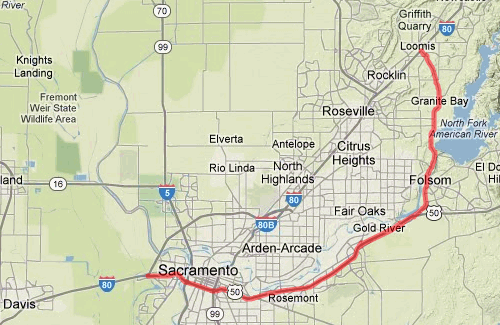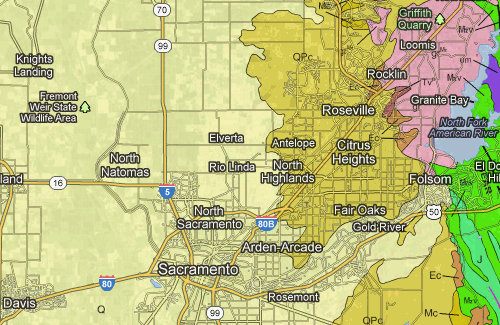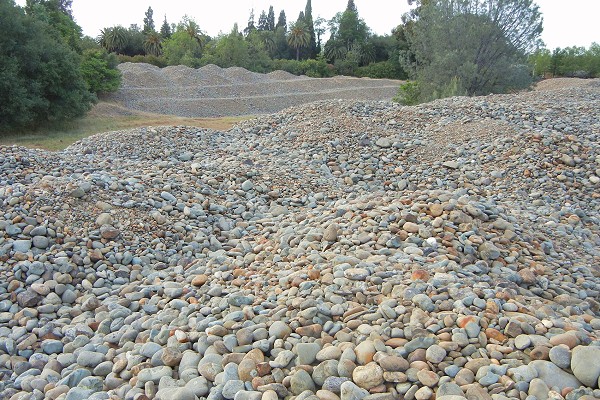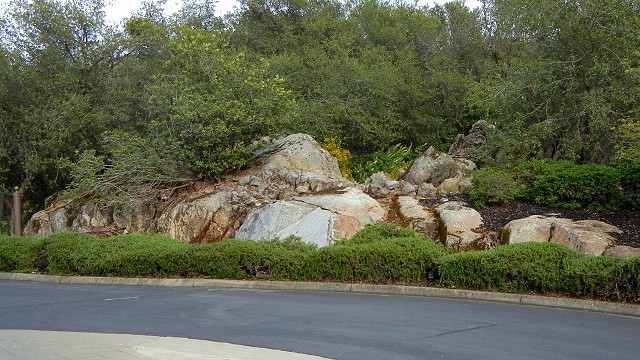You could crawl through Sacramento during rush hour on your way to (or from) Reno and Tahoe, or you could take a 36-mile side trip through water, history, greenery and geology in the granite lands and early gold country of Folsom. Here's the route as it appears on Google Maps.
To make this side trip, turn off I-80 just west of Sacramento onto US 50. This point is the western end of US 50; you can stay on that historic route past South Lake Tahoe and across Nevada to reach the Atlantic at Ocean City, Maryland.
Route 50 starts at sea level and stays on the level ground of the Central Valley, following the American River toward the mountains. Twenty miles later you've climbed just 130 feet. All of the ups and downs of the road are related to interchanges and overcrossings, not topography. You won't see it from the highway, but most of the ground is gravel tailings, piled up over decades of gold mining in the bed of the American River. The river course is open to the public in Sacramento County's American River Parkway.
At Hazel Avenue, 21 miles into the drive, exit and turn left (just above the "E" in Gold River on the map). It's a few hundred yards to the Nimbus Fish Hatchery, which has been here since the 1950s. You can tour the hatchery, or you can sit and watch the river flow. The last dam on the river, the relatively low Nimbus Dam, is just to the east.
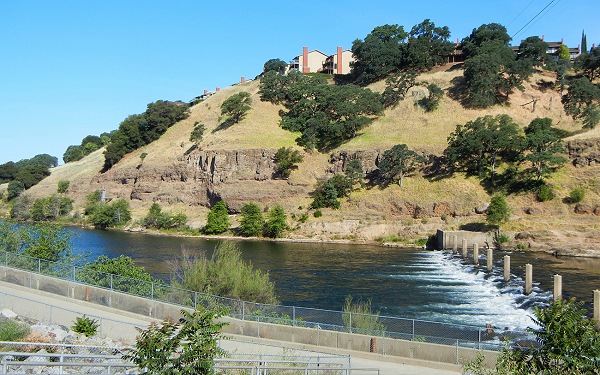
And here we finally have topography, and rocks. The rock in the cliffs is mapped as the Turlock Lake Formation, which consists of sandstone and siltstone about a half million years old. At that time the rising Sierra Nevada was shedding this sediment in vast fan-shaped aprons up and down the eastern Central Valley. The wonderful fossil beds of the Fairmead Landfill site, down by Chowchilla, are in this formation, but no one has reported anything like that around here.
